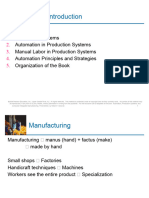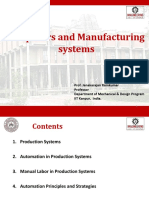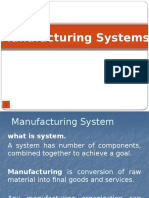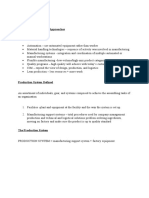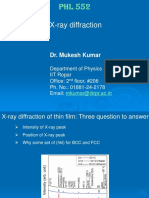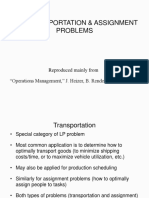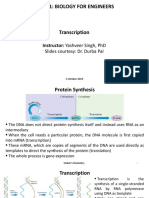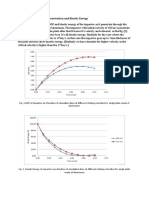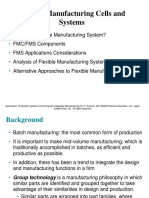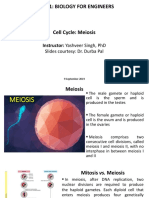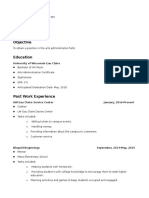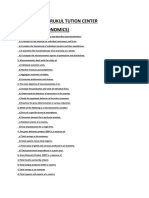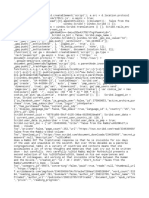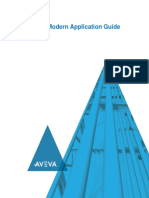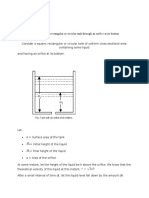0% found this document useful (0 votes)
104 views45 pagesProduction Systems, Automation Etc
The document discusses production systems and automation. It covers topics like manual labor systems, worker-machine systems, automated systems, computer integrated manufacturing, and opportunities for automation in manufacturing support systems and production facilities.
Uploaded by
himanshu singhCopyright
© © All Rights Reserved
We take content rights seriously. If you suspect this is your content, claim it here.
Available Formats
Download as PDF, TXT or read online on Scribd
0% found this document useful (0 votes)
104 views45 pagesProduction Systems, Automation Etc
The document discusses production systems and automation. It covers topics like manual labor systems, worker-machine systems, automated systems, computer integrated manufacturing, and opportunities for automation in manufacturing support systems and production facilities.
Uploaded by
himanshu singhCopyright
© © All Rights Reserved
We take content rights seriously. If you suspect this is your content, claim it here.
Available Formats
Download as PDF, TXT or read online on Scribd
/ 45








